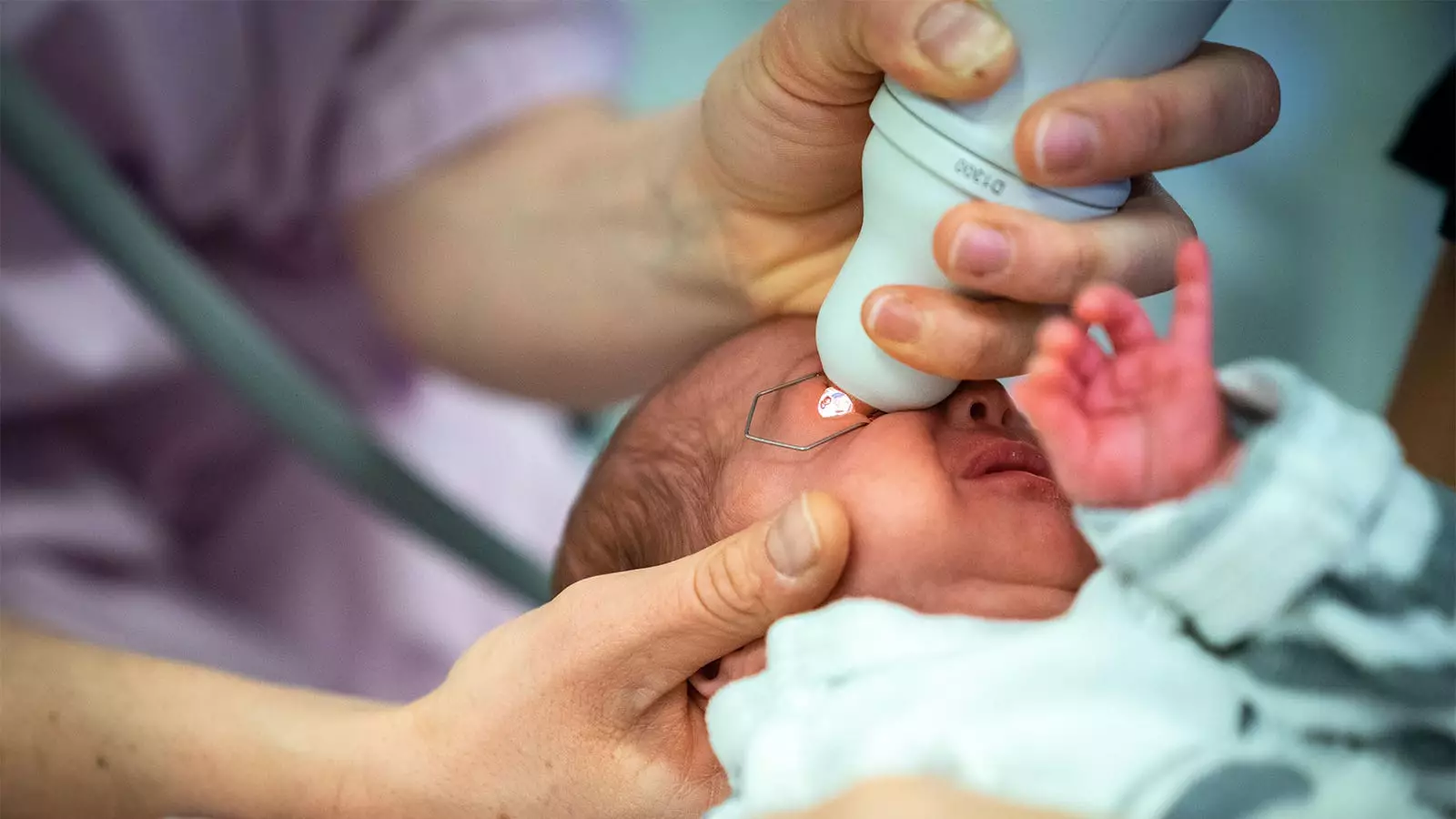Retinopathy of Prematurity (ROP) is a leading cause of visual impairment in preterm infants. As these vulnerable patients undergo multiple eye screenings, the clinician’s efforts aim to detect early stages of this condition to intervene promptly. Traditionally, mydriatic drops have played a pivotal role in dilating an infant’s pupils to enable proper examination. However, these standard mydriatic interventions have been associated with several systemic adverse effects, particularly given the frail physiology of preterm infants. A recent randomized trial underscores the promise of mydriatic microdrops as a potentially safer alternative.
The MyMiROPS study, conducted by Asimina Mataftsi and colleagues at Aristotle University in Greece, enrolled 83 preterm infants between September 2021 and January 2023. To participate, infants needed a gestational age below 32 weeks or a birth weight under 1,501 grams. The study design entailed a randomized allocation of participants into two groups: one receiving standard mydriatic drops and the other receiving mydriatic microdrops. The specificity of the medication used was a diluted mixture of 1.67% phenylephrine and 0.33% tropicamide, administered in varying volumes.
By measuring the horizontal pupil diameter at intervals of 45, 90, and 120 minutes post-administration, researchers aimed to evaluate the effectiveness between the two formulations clearly. The outcome measures were critical, not just in terms of pupil dilation, but also regarding any adverse events recorded following the application of the eyedrops.
The results of the study illuminated a significant finding: mydriatic microdrops were found to be noninferior to the standard drops regarding mydriatic efficacy after 90 and 120 minutes. Notably, at the 45-minute mark, microdrops exhibited superior effectiveness, leading to greater dilation compared to standard drops. This finding could transform clinical practices surrounding ROP screenings, offering a promising alternative that may reduce the risk of adverse effects associated with drug administration.
Further analysis demonstrated that infants administered standard drops experienced more significant variations in oxygen saturation levels, suggesting a heightened potential for cardiorespiratory challenges. This amplified concern is particularly pertinent in the context of preterm infants, whose respiratory stability is often precarious. Investigating these parameters highlights the need for careful consideration when selecting mydriatic agents for use in delicate neonatal populations.
One of the most concerning aspects of using standard dilute drops was the higher percentage of hypertensive episodes noted in the participants. The median percentage of hypertensive episodes was lower in those receiving microdrops (0.10% versus 0.14%, P=0.01). These findings suggest that microdrops not only maintain efficacy but may additionally offer a safety profile that traditional methods lack, prompting a shift in how ophthalmologists administer these essential medications.
The study has validated previous concerns raised by healthcare practitioners regarding the systemic impacts of mydriatic drugs in preterm infants. Reports of apnea and other adverse systemic reactions highlight the delicate balance that clinicians must maintain when managing this vulnerable population. The successful implementation of microdrops could, therefore, improve the quality of care in neonatal intensive care units and substantially mitigate risks for preterm infants undergoing ROP screenings.
While the MyMiROPS study leaves a commendable footprint in the literature, it also underlines the need for further exploration. Recognizing the limitations faced—especially concerning safety outcomes in 30% of patients—future research is essential for validating these findings across diverse clinical scenarios and regimens.
As the field of neonatal care continues to evolve, adopting innovative approaches like mydriatic microdrops may redefine standards of practice in ROP screening. The compelling evidence presented in the MyMiROPS study advocates for change, signaling a potential shift that prioritizes safety without sacrificing diagnostic efficacy, a crucial advancement for our most vulnerable infants.


Leave a Reply